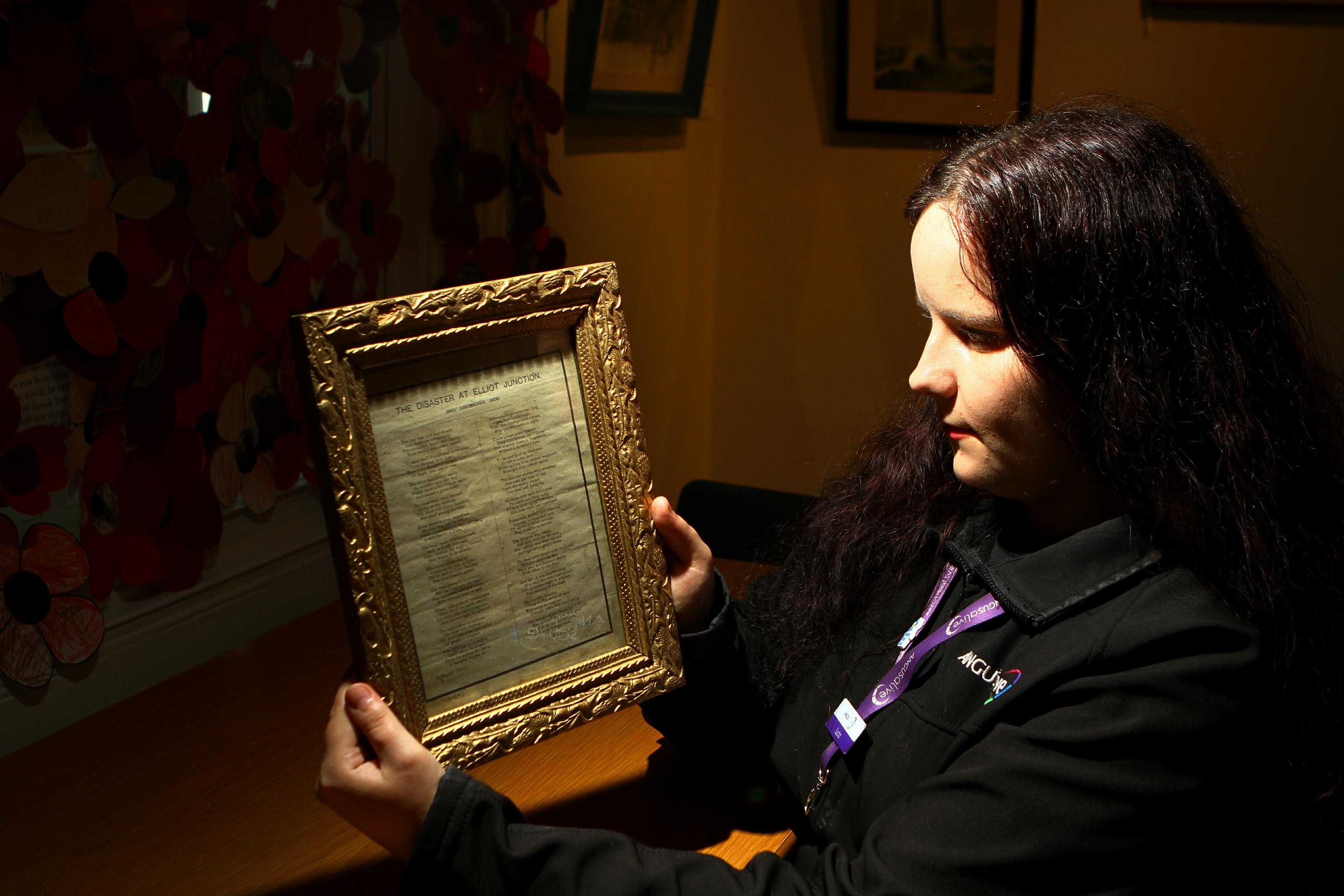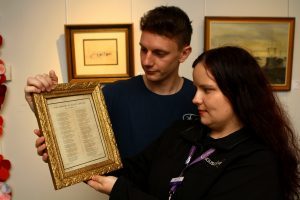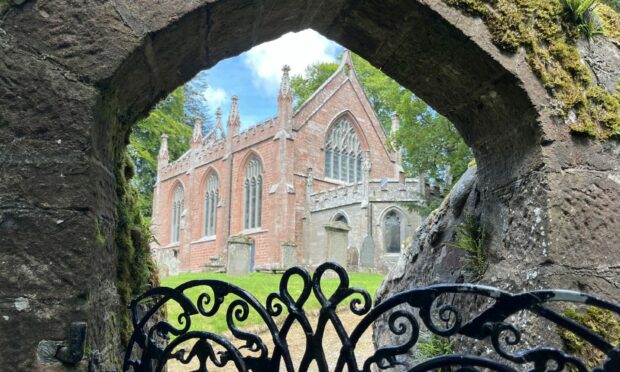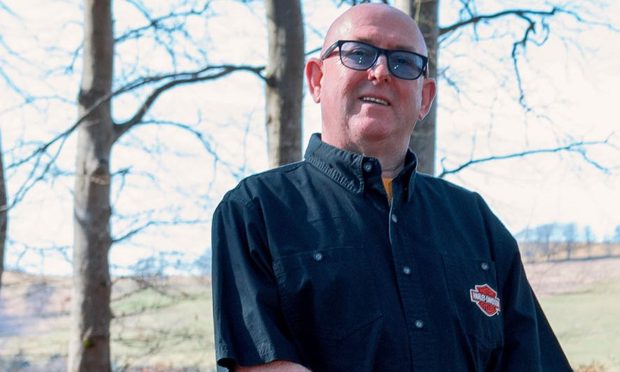A series of poems written by a Tayside woman commemorating an Angus rail tragedy has been uncovered after more than a century.
The Elliot rail disaster of 1906 shocked the nation as 22 people died following the collision between an Edinburgh-bound express train and a stationary local engine.
Broughty Ferry woman and “well-known local poetess” Agnes Gilruth Pringle wrote a series of four occasional verses on the disaster, the arrest of driver George Gourlay, his trial, and his release from prison in 1907.
Known for her “simple and pleasing verse on passing events” according to The Courier in 1936, Mrs Pringle lived at 341 Brook Street and died in 1973 aged 94 years old.
She was acknowledged by Buckingham Palace for a poem of sympathy to King Edward following the death of King George in 1936. The new monarch was “much touched by the sentiments they contained”.
A Letham family recently found a framed collection of pieces printed in The Courier during a house clearance and donated the set to the Signal Tower Museum in Arbroath on Friday.
Michael McEwan said he was pleased the poems “would find a good home” after they were found tucked away among family effects.
The disaster also seriously injured eight people.
Museum officer Kirsten Couper said: “The dead included Alexander William Black, MP for Banffshire and 18-year-old Arbroath man John Wood.
“The inquiry into the accident found that the mistakes were made due to the adverse weather but driver error was also cited.
“It seems the poems were popular particularly in Arbroath and served as a social commentary of events relating to the crash.
“Today there is a group locally hoping to ensure a memorial plaque is mounted near the scene of the accident to mark the event and the lives that were lost.”
David ‘Dev’ Smith Cargill ran from his home in South Street to Elliot junction when word reached the town of a devastating rail disaster.
During his efforts ‘Dev’ was working among ice as well as a boiling hot train which gave him a serious chill and he subsequently died shortly afterwards.
Dev’s great, great nephew Jim Millar is working towards a permanent memorial at the crash site.
A portion of the first poem, The Disaster at Elliot Junction:
The day was cold and dreary,
And darkness fell around;
The travellers, bright and cheery,
Were mostly homeward bound,
To meet their friends and loved ones
Upon the glad New Year;
They little thought of danger,
Or death, that was so near.
…
The trains were in collision –
The local and express –
Oh, God! The cries were awful
Of people in distress.
The sight was so appalling,
‘Twill never be forgot:
There lay among the debris
A mangled human lot.
…
All those who were uninjured
Put forth a willing hand,
To help their dying comrades
And hear their last command.
Exhausted, bruised and bleeding
Exposed to wind and cold,
The’ agony of those mortals
Was dreadful to behold.
The hospital was ready,
And then with tender care
The injured ones were carried
And laid down gently there.











